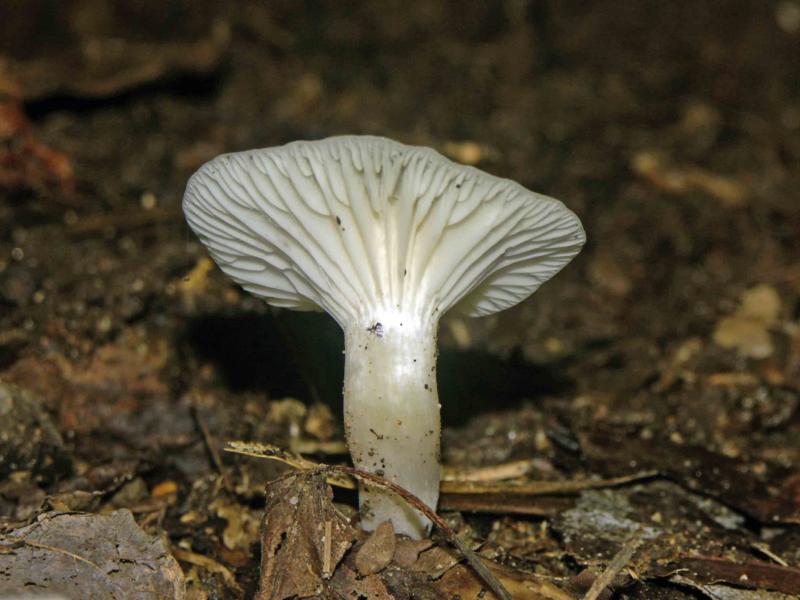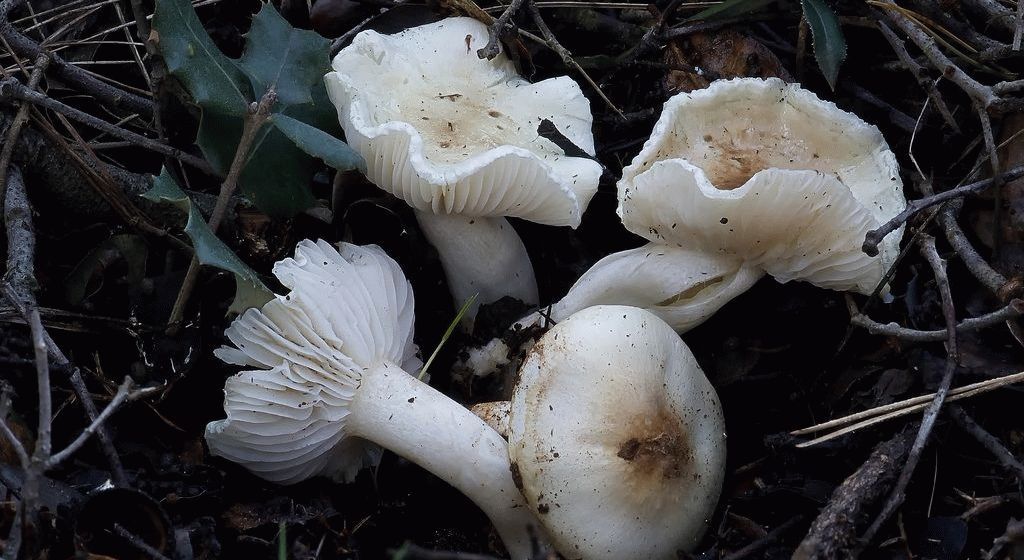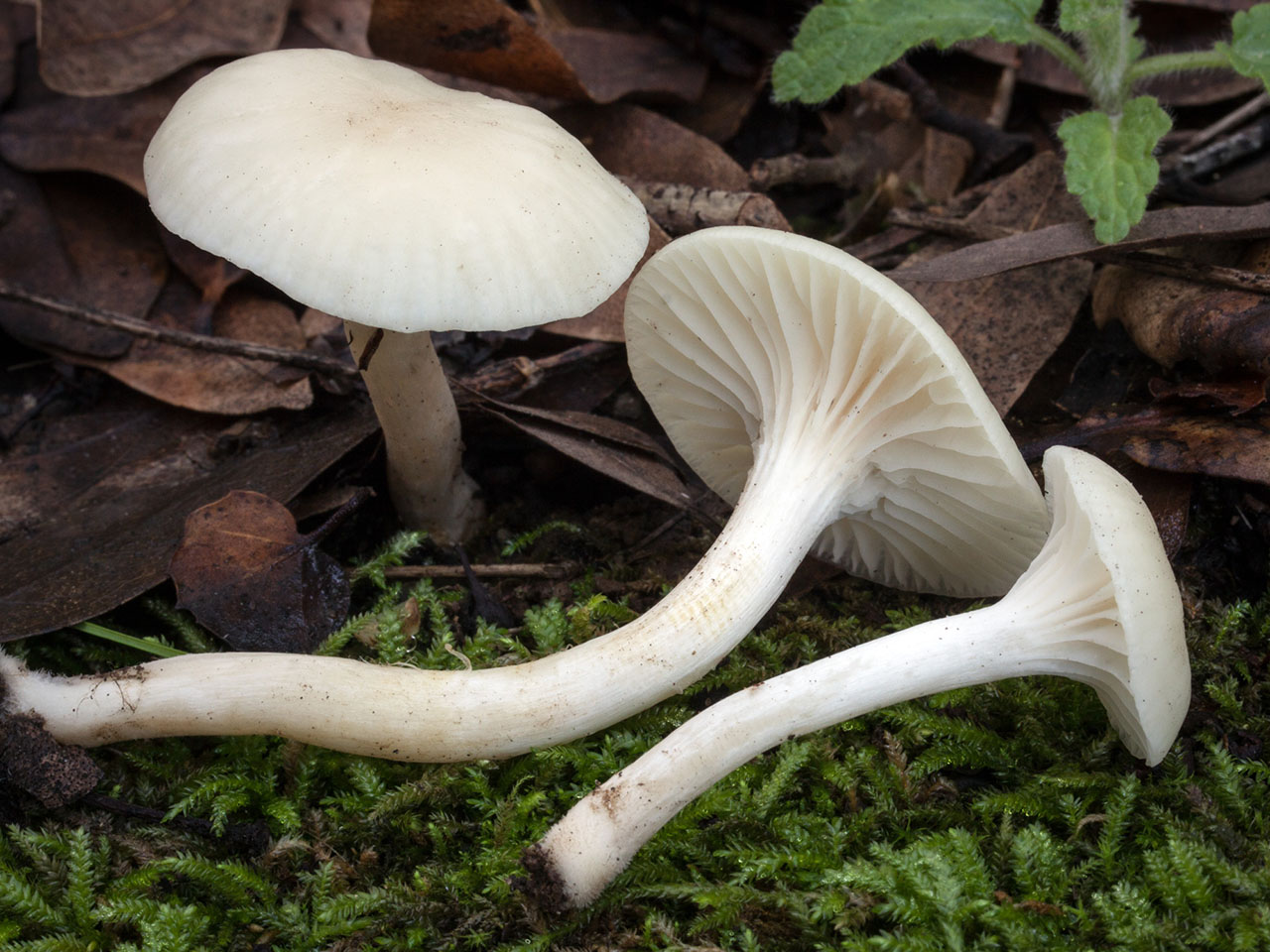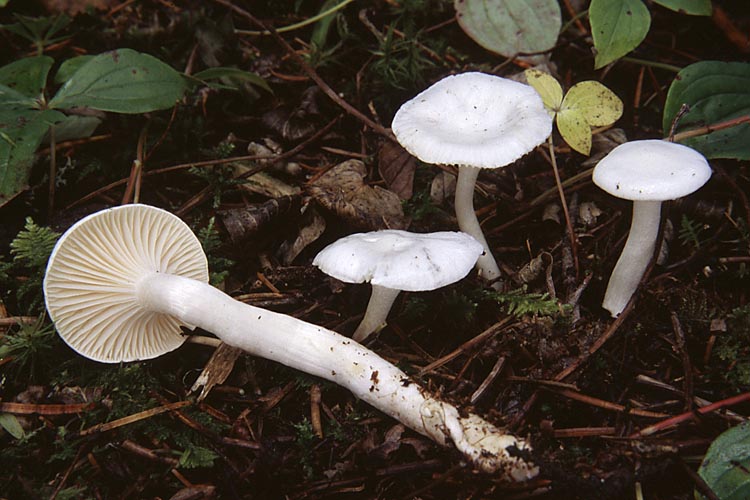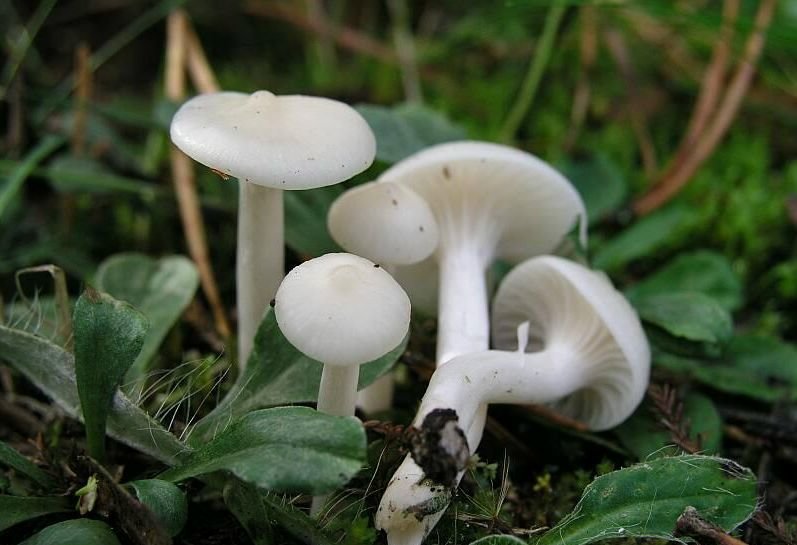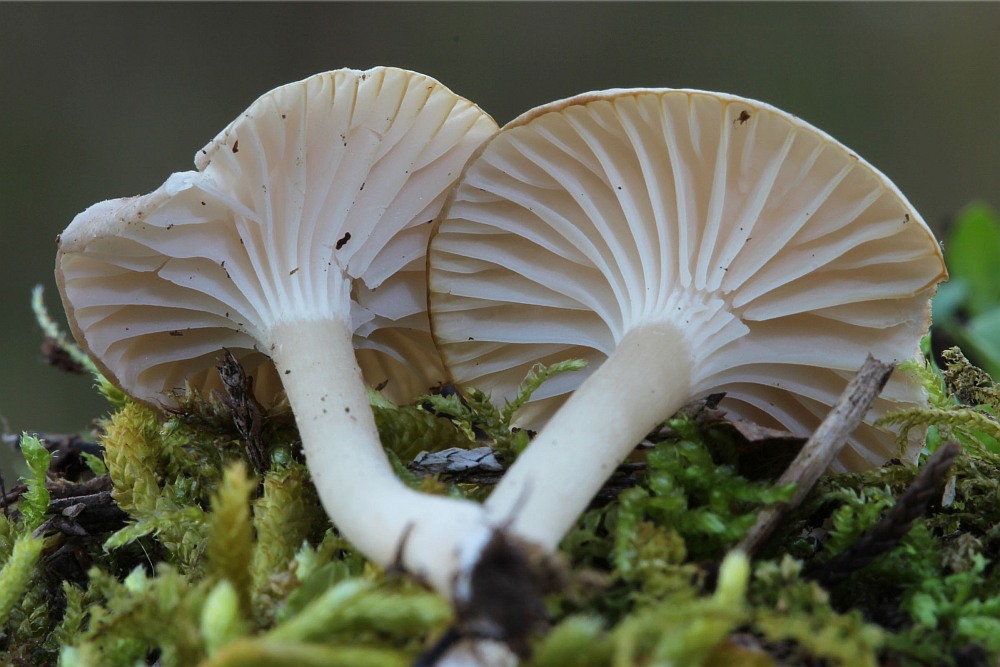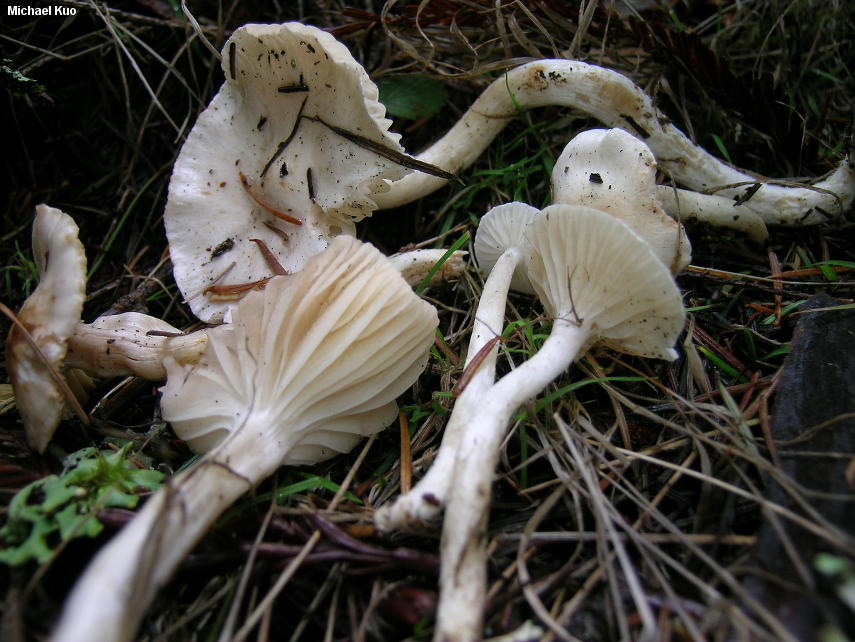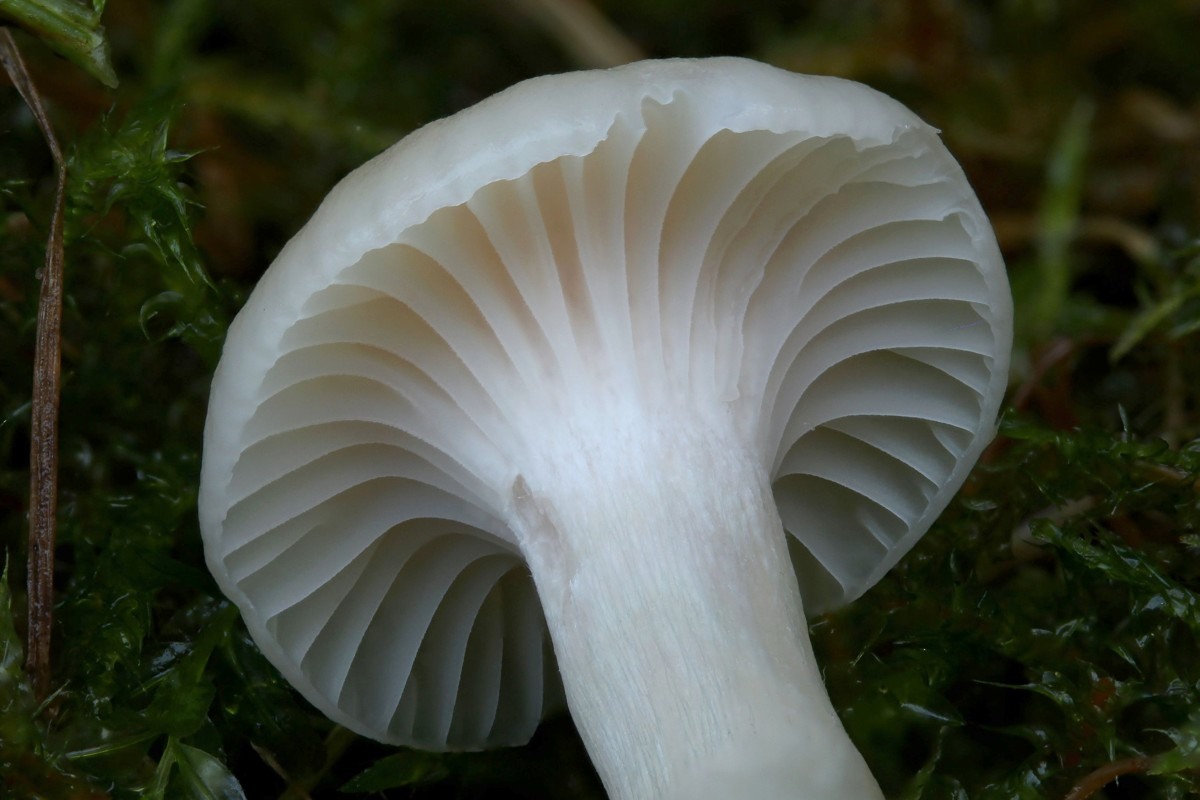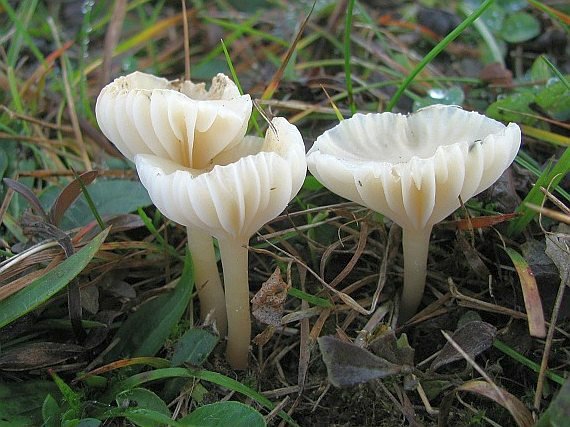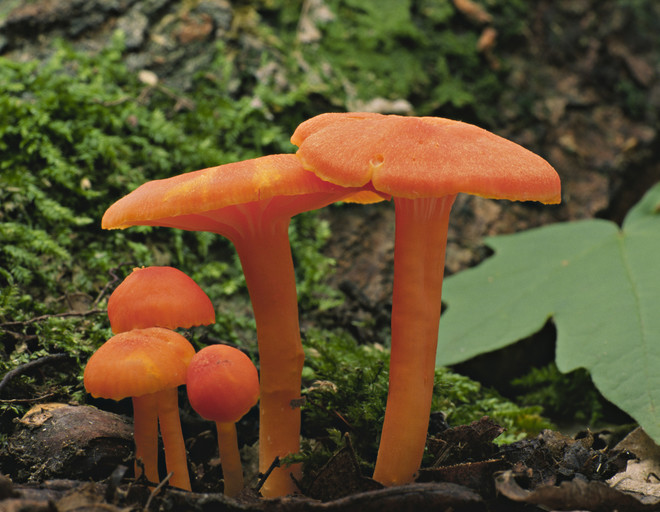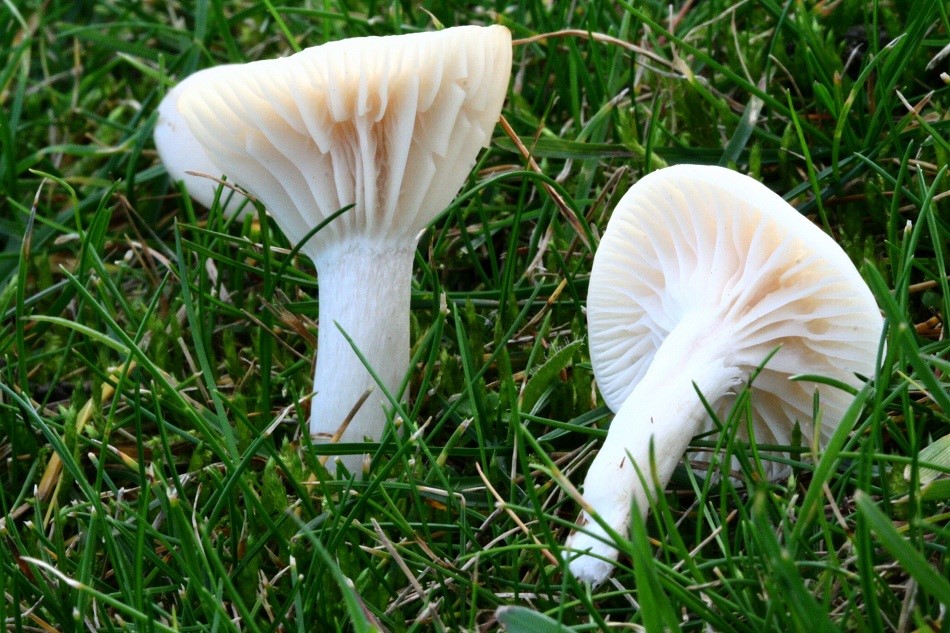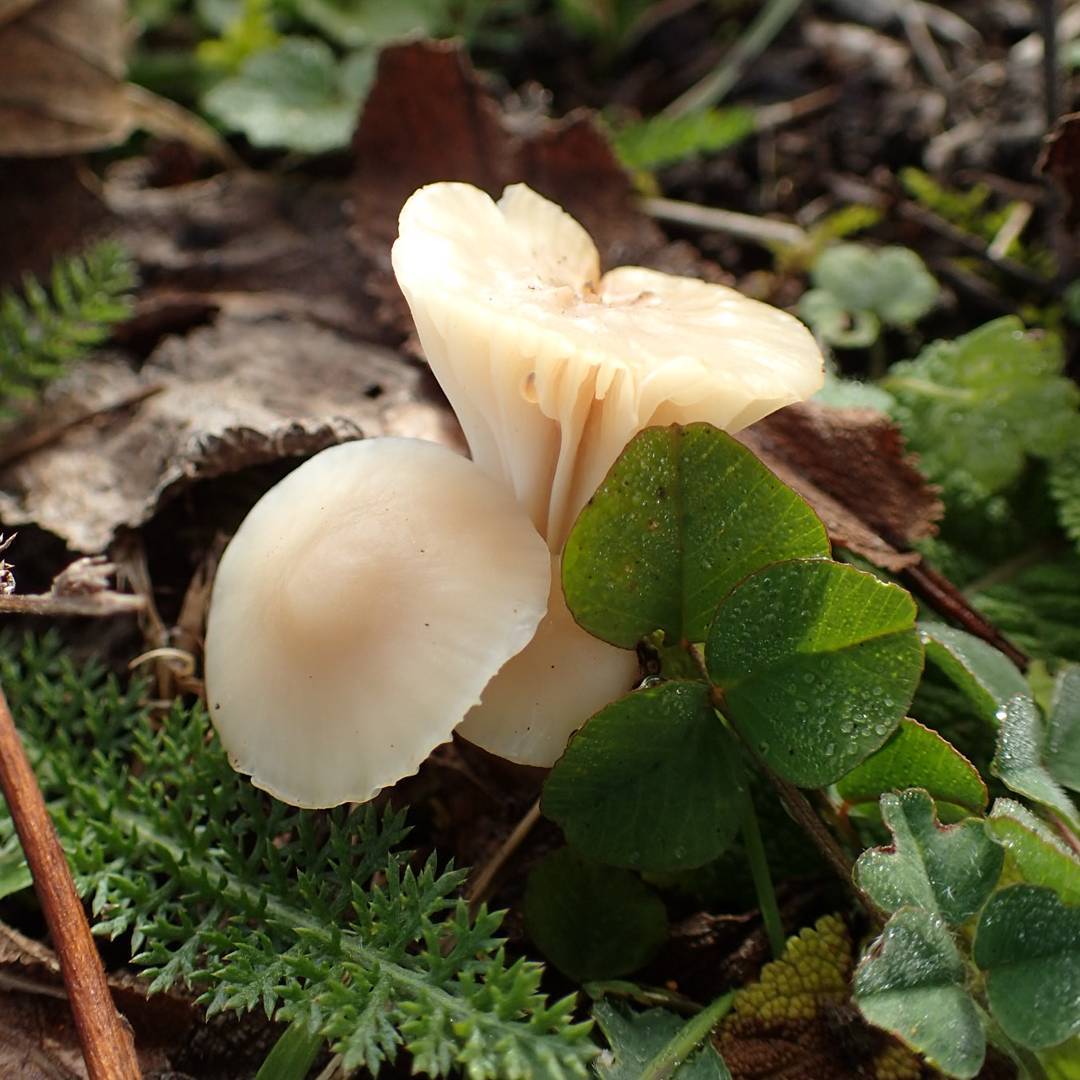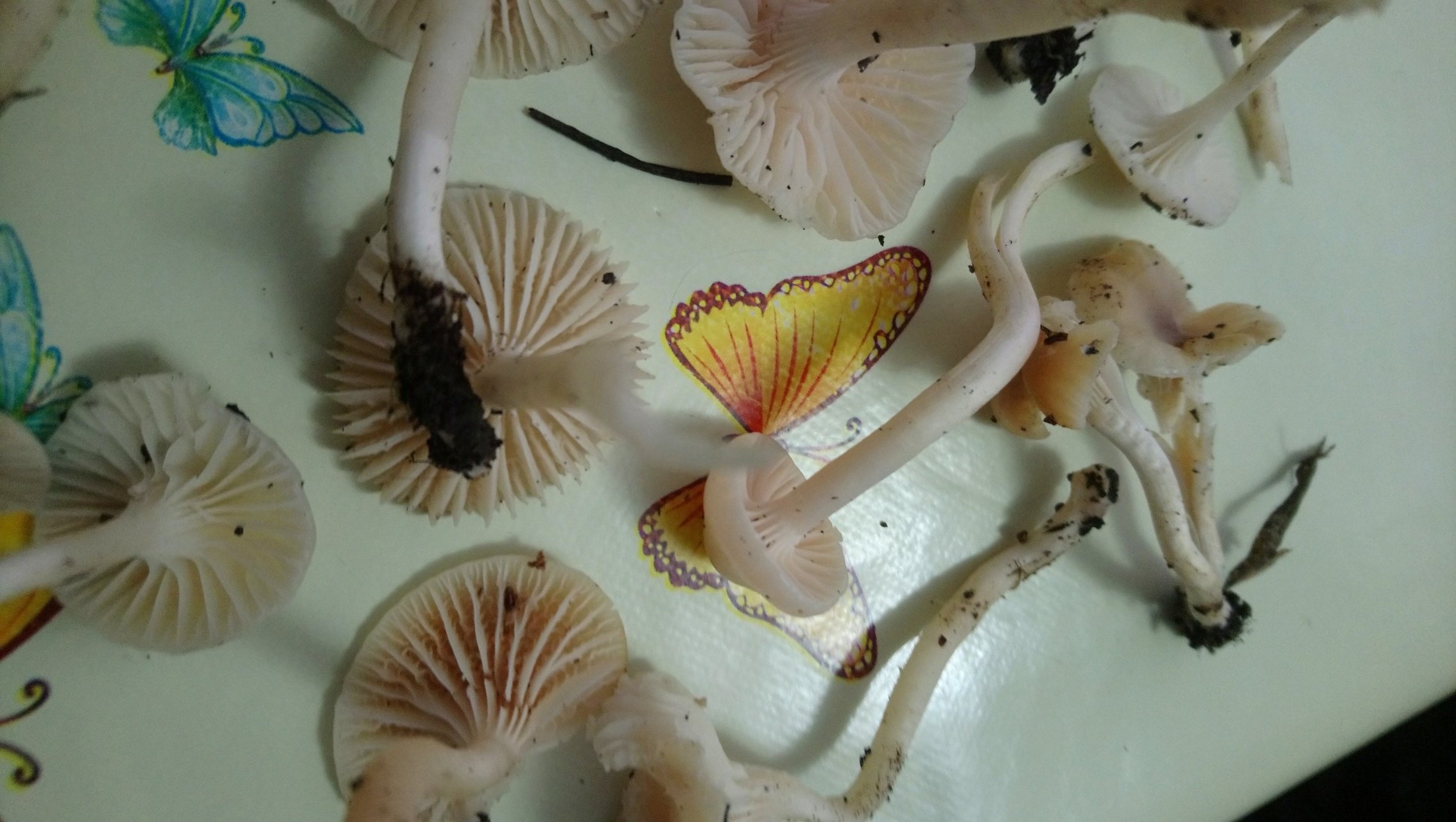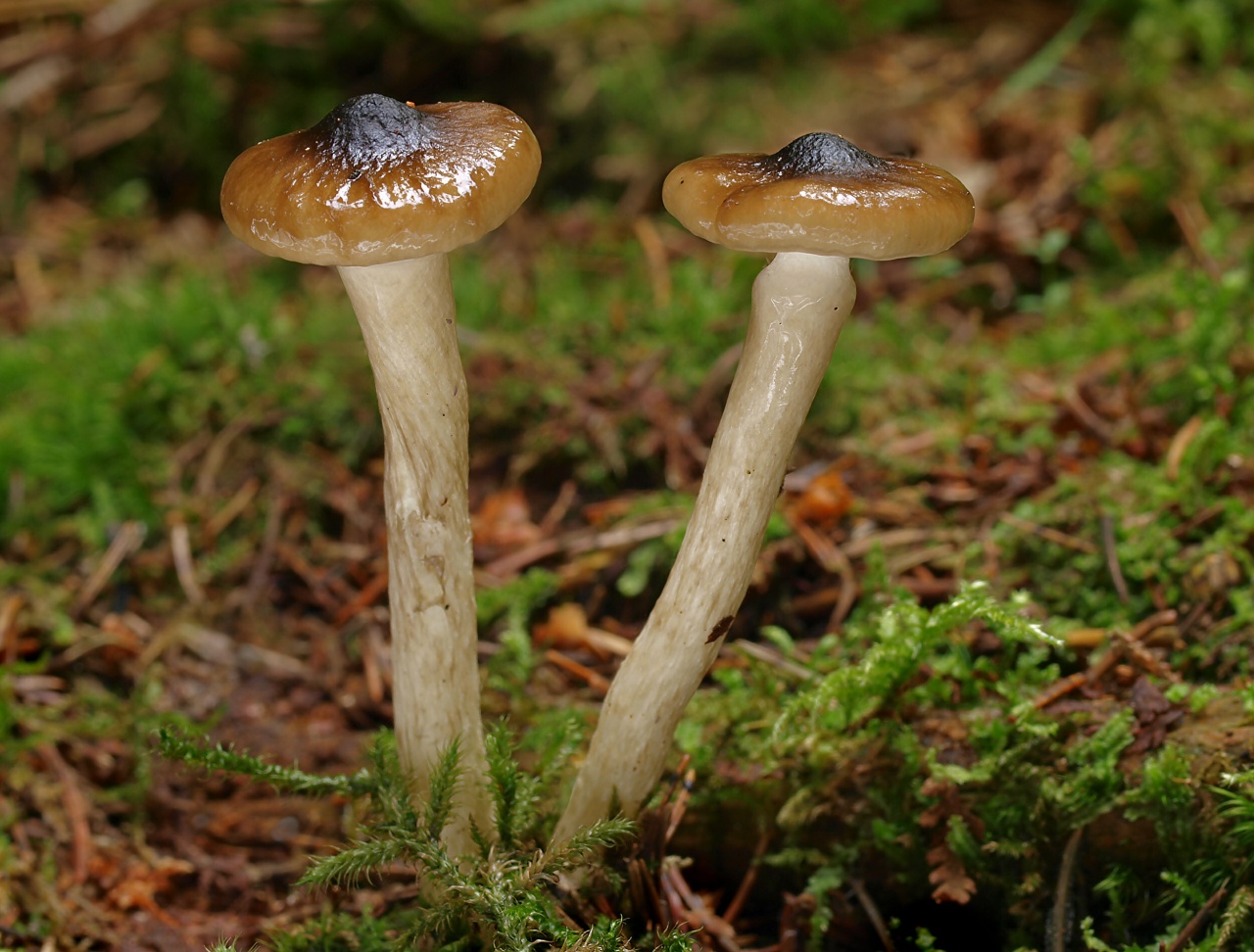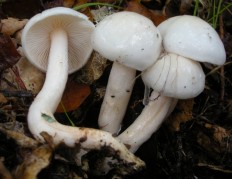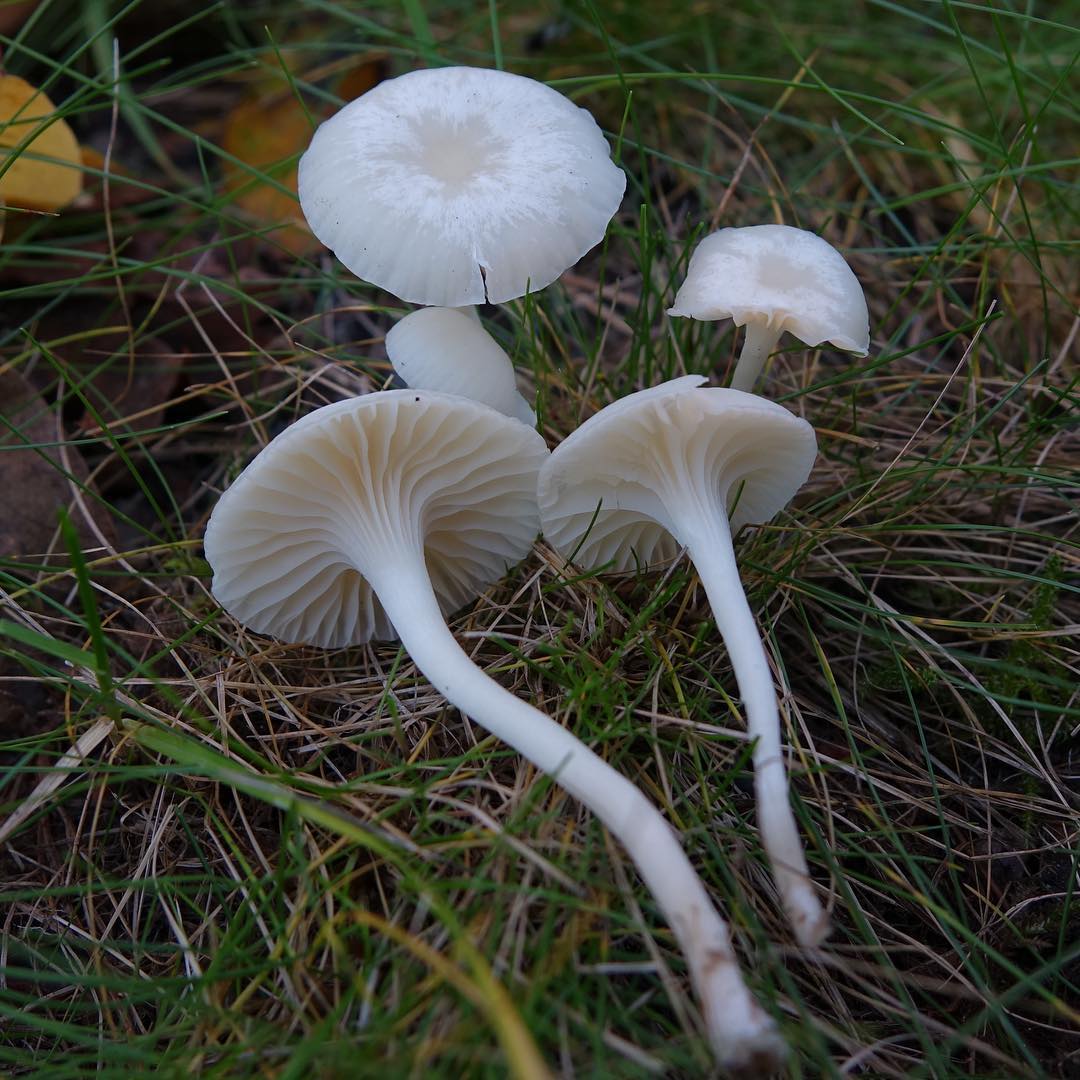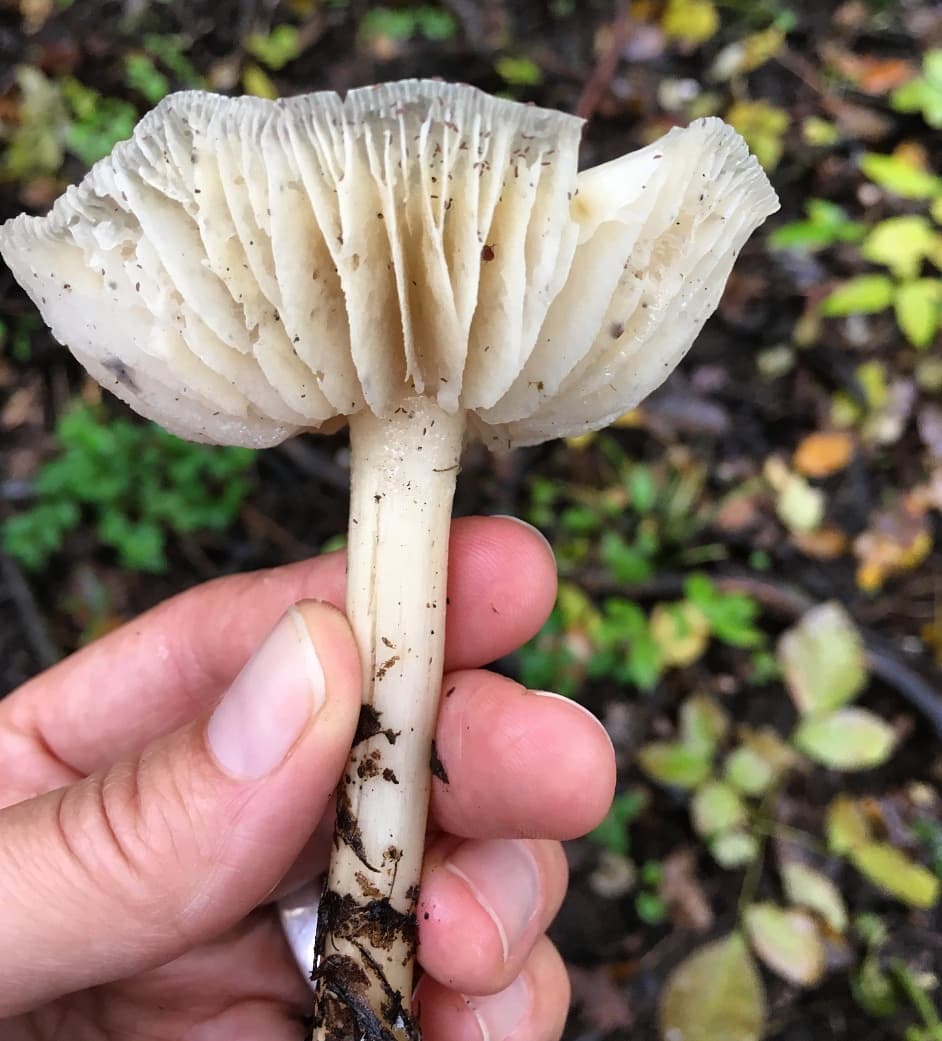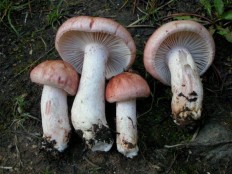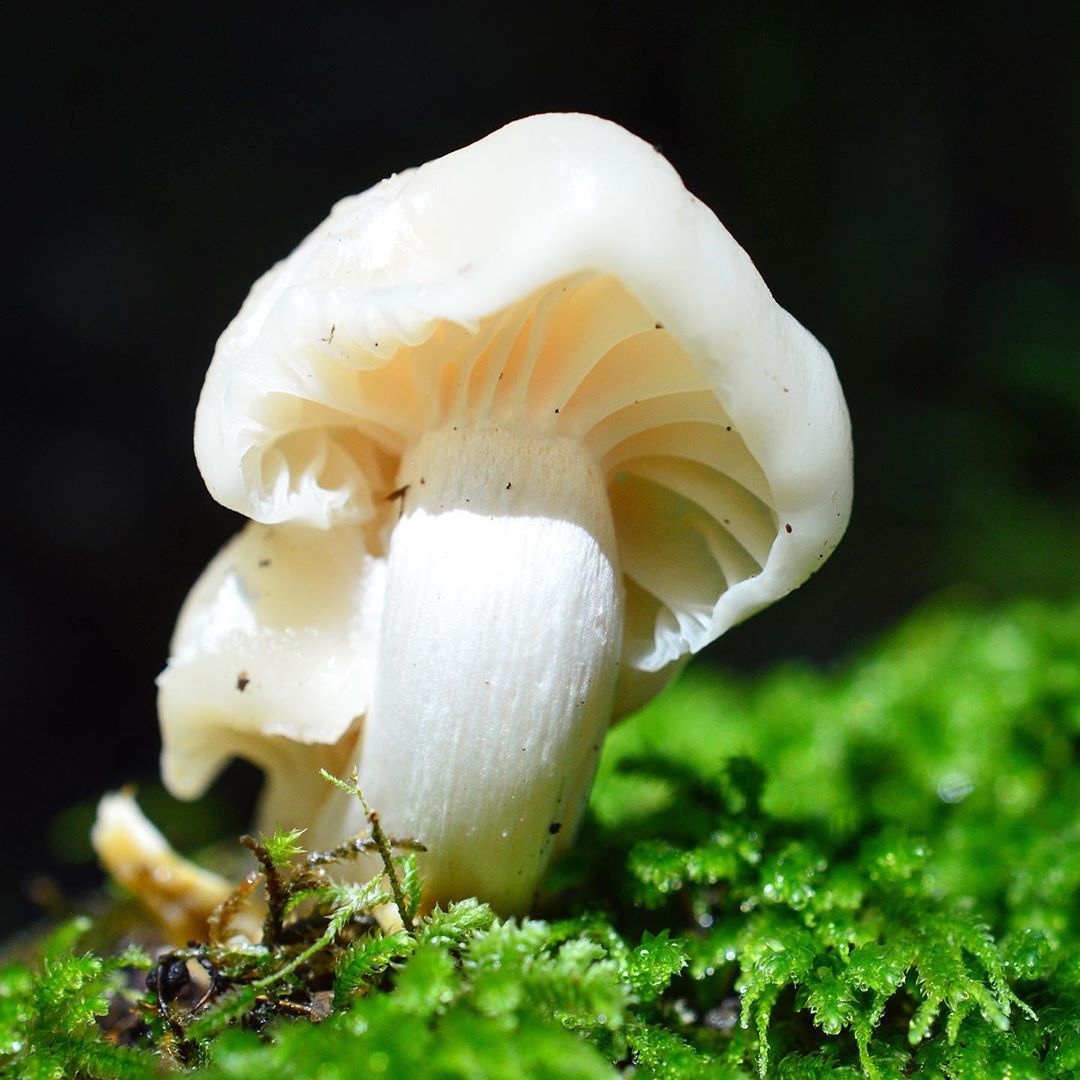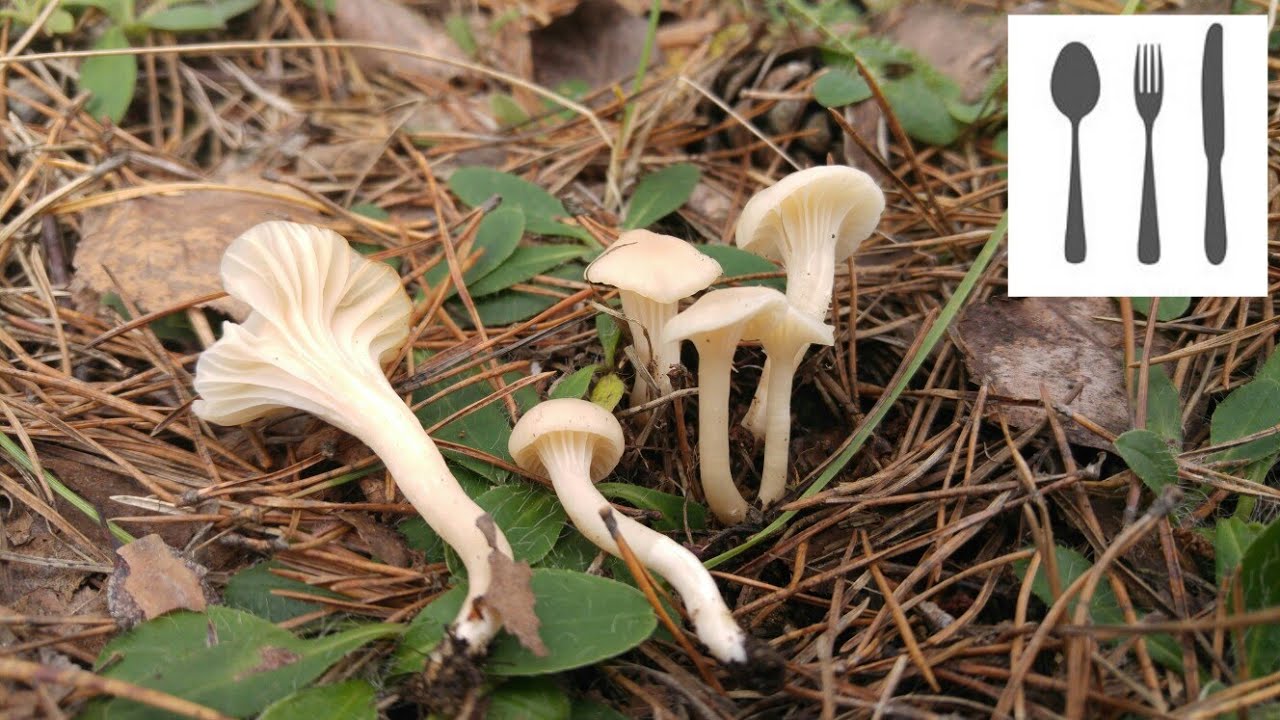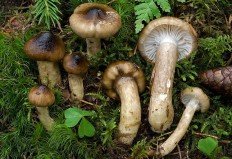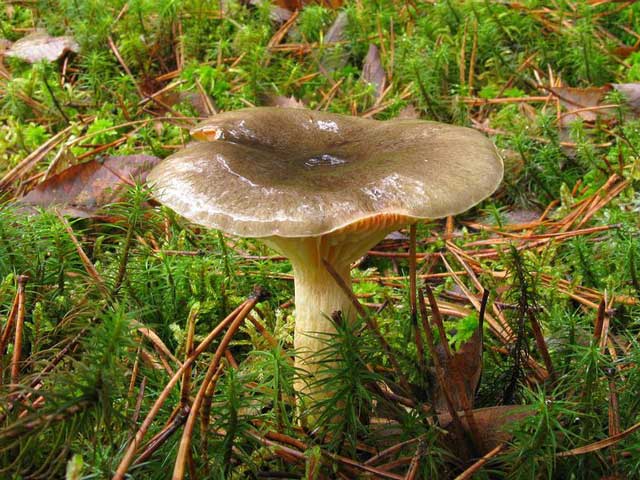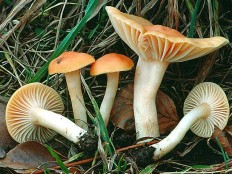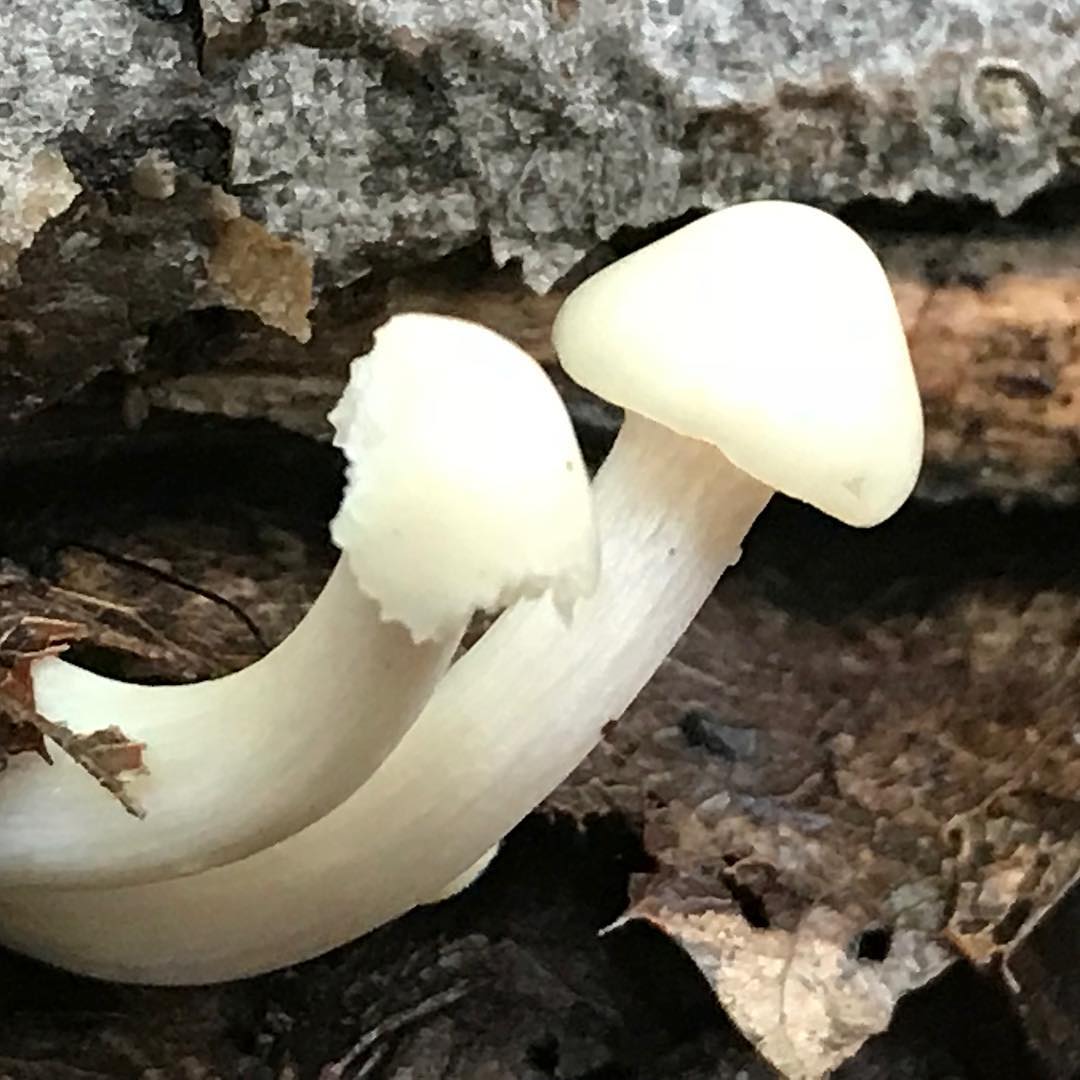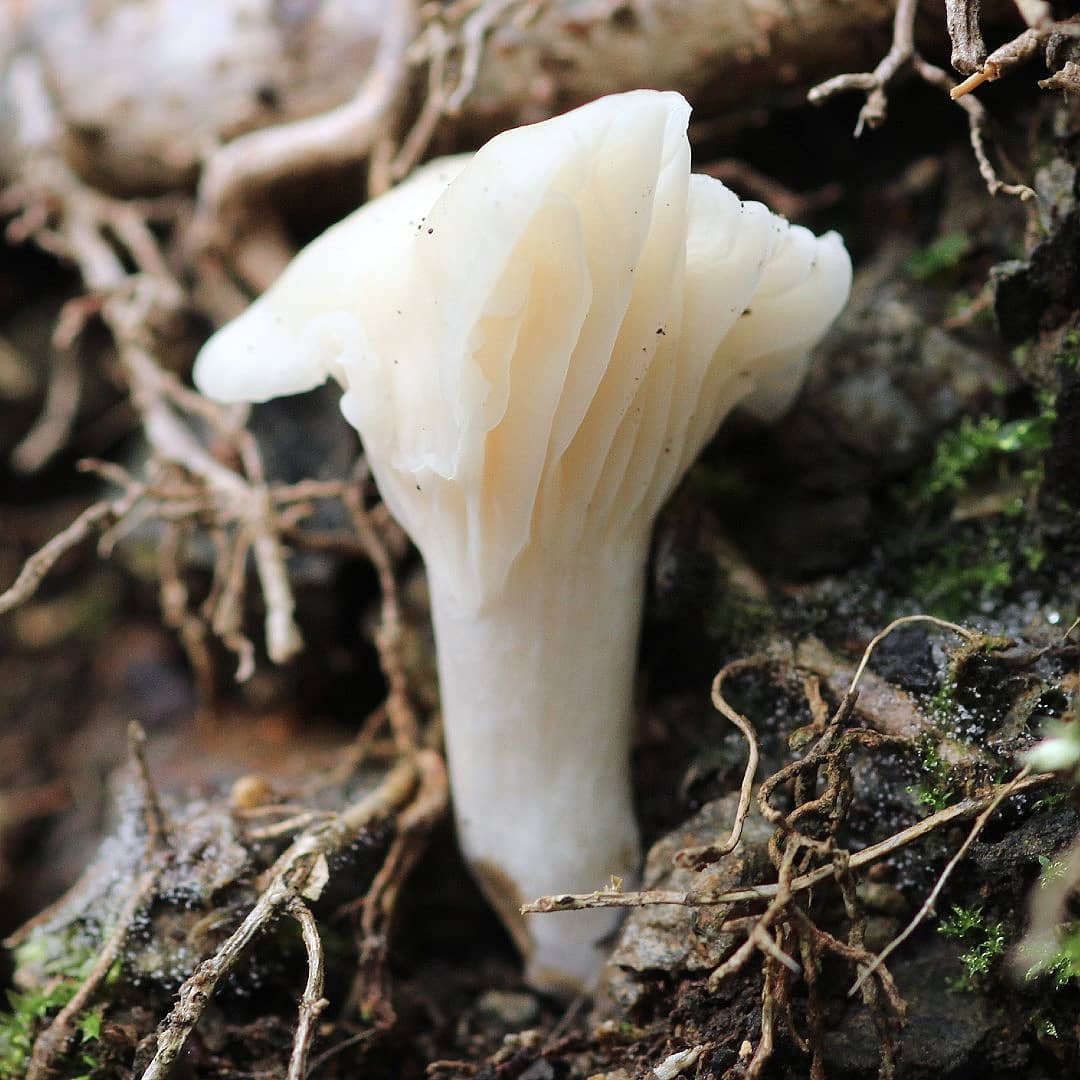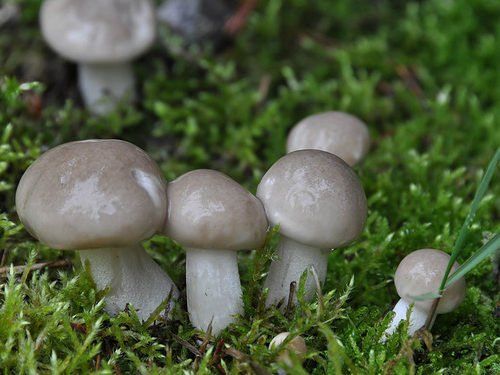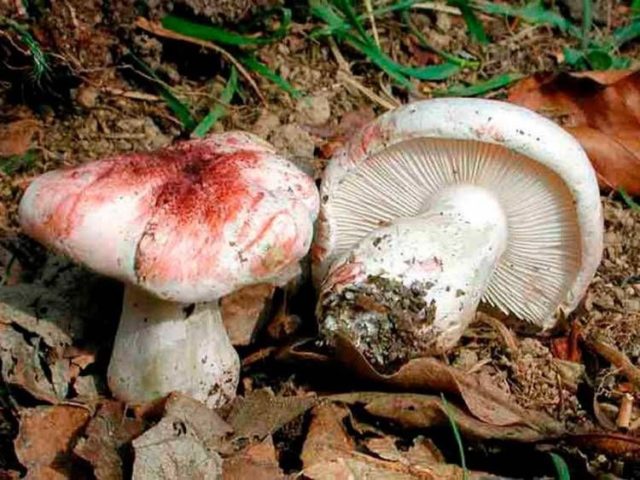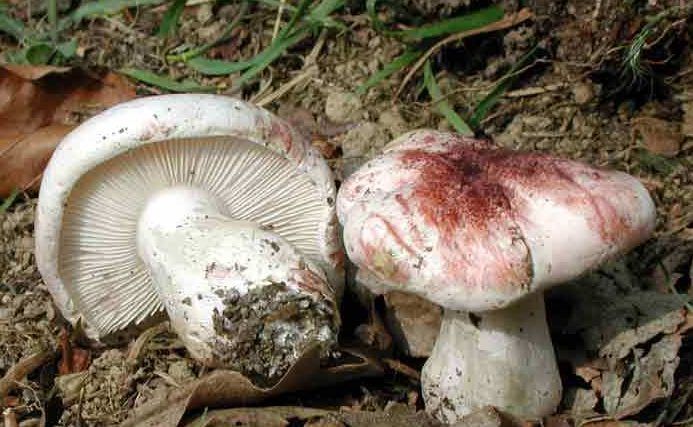Gigrofor poetic: where it grows and how it looks, photo
| Name: | Gigrofor poetic |
| Latin name: | Hygrophorus poetarum |
| Type of: | Edible |
| Synonyms: | Gigrofor poetic |
| Systematics: |
|
Poetic Gigrofor is an edible specimen of the Gigroforov family. Grows in deciduous forests in small groups. Since the mushroom is lamellar, it is often confused with inedible specimens, therefore, during a "quiet" hunt, you need to be extremely careful, since the toxins of the fruit bodies can cause irreparable harm to the body.
What does a poetic hygrophor look like?
The poetic gigrofor has a rounded cap, which straightens out and becomes bumpy as it grows. The uneven edges are bent inward. The surface is covered with a glossy, velvety skin of a whitish-pink color. Fully ripe mushrooms change color to light red.
The lower layer consists of jagged, sparsely spaced, pale pink plates. Reproduction occurs by elongated spores, which are located in a light ocher powder.
The leg is dense, slightly thickened closer to the ground. The velvety surface is sticky, covered with fine fibers. The color is snow-white with a pink or reddish tint. The pulp is dense, white, with mechanical damage it does not change color, does not emit milky juice. Taste sweetish, fruity aroma or reminiscent of blooming jasmine.
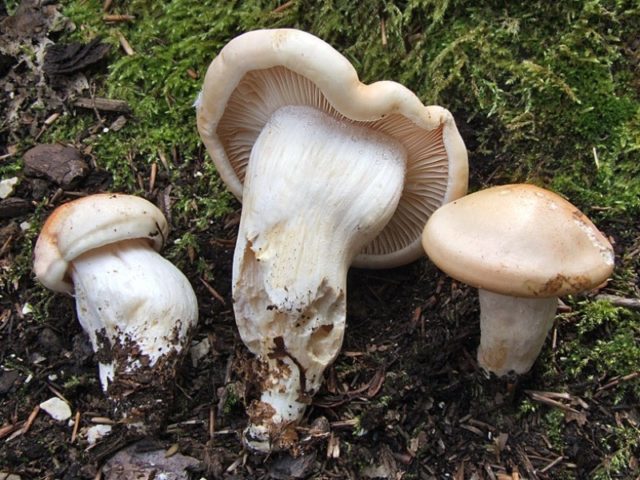
The mushroom has a pleasant taste and aroma
Where the poetic hygrophor grows
Poetic Gigrofor prefers to grow surrounded by deciduous trees, on nutritious soil. Fruiting from June until the first frost throughout Russia. Appears in single specimens or in small families.
Is it possible to eat a poetic hygrophor
Because of its pleasant taste and aroma, the poetic hygrophor is widely used in cooking. After heat treatment, the mushrooms are salted, pickled, fried and frozen for the winter.
False doubles
Gigrofor, poetic due to its jasmine smell, is difficult to confuse with other species, but since it is from a large family, it has similar brothers. Such as:
- Pinkish - a conditionally edible species, but due to an unpleasant taste and smell, it has no nutritional value. Grows on a spruce substrate from August to October. In cooking, it is used pickled and dried.

Fruiting mainly in autumn
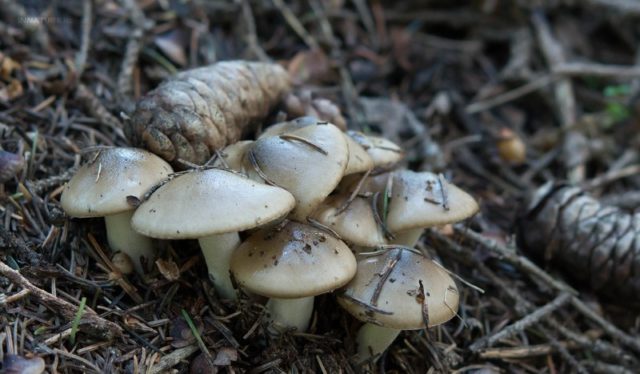
Family member suitable for pickling and pickling
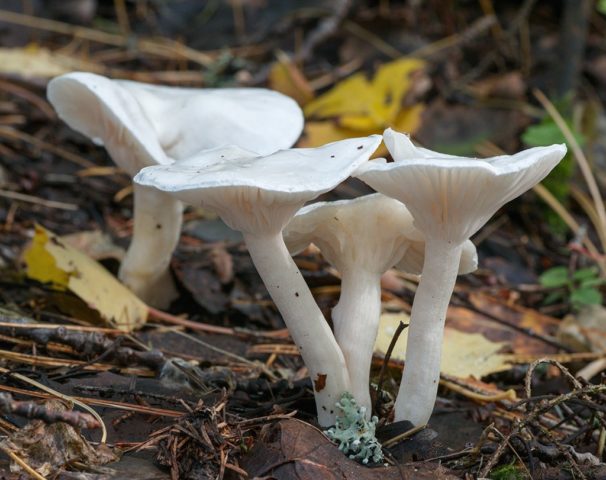
Yellow-white hygrophor has medicinal properties
Collection rules and use
All mushrooms absorb toxic substances like a sponge, therefore, when going to the forest, it is important to know the rules of collection
- away from highways, factories and factories;
- in ecologically clean places;
- in dry weather and in the morning;
- the found specimen is cut with a knife or twisted out of the ground, trying not to damage the mycelium;
- the place of growth is sprinkled with soil or covered with a substrate.
Immediately after collection, you need to proceed to processing. The crop is cleaned of forest debris, washed under warm, running water, and the skin is removed from the stem. After boiling in salted water, mushrooms can be fried, boiled, preserved. They can also be frozen and dried. Dried fruit bodies are stored in a rag or paper bag in a dark, dry place. The shelf life should not exceed 1 year.
Conclusion
Poetic Gigrofor is a tasty and aromatic mushroom that grows among deciduous trees. Bears fruit in small groups in autumn. In cooking, they are used to prepare a variety of dishes, but only after heat treatment.
Fried mushroom with onions recipe
Hygrophor can be used to make a light quick dinner or a nutritious second course for lunch. Let's start with the simplest recipe. For him you will need:
- a pound of mushrooms;
- 2 medium onions;
- some vegetable oil for frying;
- a pinch of salt.
First option
- Cut the hygrophors into large pieces, the onion into half rings.
- Place prepared ingredients in a heated skillet with butter and cook for 15-20 minutes.
- If the mushrooms are juiced too much, drain off the excess liquid during the frying process.
- When all the moisture has evaporated and the contents of the pan are covered with a golden crust, it's time to serve the dish.
Second way
- Chop the onion and mushrooms as in the first option.
- First, lightly fry the onion until it becomes translucent.
- Place mushrooms in a skillet and cook for 15-20 minutes. If a lot of liquid has formed, proceed as described above.
The benefits and harms of hygrophors
The beneficial properties of fruits are due to the content of active substances, amino acids, vitamins A, B, PP, C, as well as trace elements: zinc, iron, magnesium, phosphorus, manganese, iodine, potassium, sulfur, sodium. Hygrophors have a large amount of protein in their composition, and what they can compete with even with meat products.
Eating mushrooms regularly will help:
- improve the condition of the hair and nail plate;
- remove puffiness under the eyes;
- improve skin color, even out tone and get rid of acne;
- improve the functioning of the digestive tract;
- reduce weight by burning body fat reserves;
- remove toxins.
Features of hygrophoric mushrooms (video)
Low calorie content allows you to eat mushrooms in any quantity, use during a special nutrition system or diet.
We collect and eat green mushrooms
In China, a tincture is created from milk from hygrophors, which is considered a real delicacy and is taken to improve health, relieve stress, and prevent insomnia. Hygrophoric enzymes will help you to quickly recover from colds, various infectious diseases and lung diseases. In addition, they naturally increase immunity, strengthen the walls of the heart, and improve memory.
Important! Note that they are high in fiber. The stomach is hard and takes a long time to digest it, so excessive consumption can cause heartburn or diarrhea.
Hygrophors are poorly absorbed by a fragile child's body, therefore, children under 14 need to limit the portion. It is forbidden to eat mushrooms for those who suffer from individual intolerance.
Video to the description of the mushroom late hygrophor
The text "This is our November coniferous forest, an already middle-aged forest. And this is a mushroom characteristic of November. This is a survey in the Kiev region, we have such interesting mushrooms growing in November, which are called late hygrophor. This one is larger, and this one is younger, here it is also, interesting, showed its inside out. Now we will extract the olin mushroom to examine it. So, here's a typical color for him, such, in warm tones, hesitant. There is a stripe on the leg. the leg itself converges with a pointed end into the ground, down. Mushroom - such, not very common, not very well-known, but, nevertheless, edible. although the 4th category. Well, what to want from the end of November? Gigrofor late ...
»
Gigrofor olive-white: description and photo
| Name: | Gigrofor olive-white |
| Latin name: | Hygrophorus olivaceoalbus |
| Type of: | Conditionally edible |
| Synonyms: | Sweetheart, Blackhead, Olive white woodlice |
| Specifications: |
|
| Systematics: |
|
Gigrofor olive-white - a lamellar mushroom, part of the family with the same name Gigroforovye. It belongs, like its relatives, to Basidiomycetes. Sometimes you can find other names of the species - sweet tooth, blackhead or olive-white woodlouse. It rarely grows singly, most often it forms numerous groups. The official name is Hygrophorus olivaceoalbus.
What does an olive-white hygrophor look like?
The olive-white hygrophor has a classic structure of the fruiting body, so its cap and leg are clearly pronounced. In young specimens, the upper part is conical or bell-shaped. As it matures, it becomes prostrate and even slightly depressed, but a tubercle always remains in the center. In adult mushrooms, the edges of the cap are tuberous.
The diameter of the upper part of this species is small. The maximum indicator is 6 cm. Even with a slight physical impact, it crumbles easily. The surface color varies from gray-brown to olive, with a more intense shade in the center of the cap. The pulp is of a dense consistency, when broken, it has a white color, which does not change upon contact with air. It has a pleasant mushroom smell and a slightly sweet taste.
On the back of the cap, you can see rare fleshy plates of a white or cream shade, slightly descending to the leg. In some specimens, they can branch out and intertwine. The spores are elliptical, 9-16 (18) × 6-8.5 (9) microns in size. Spore powder is white.
Its leg is cylindrical, fibrous, often curved. Its height reaches from 4 to 12 cm, and its thickness is 0.6-1 cm. Closer to the cap, it is white, and below, olive-brown scales in the form of rings are clearly visible.
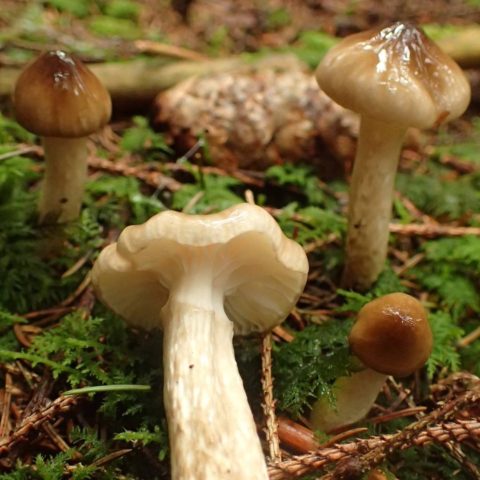
Gigrofor is olive-white in damp weather, after frost it brightens noticeably
Where does the olive-white hygrophor grow
This species is widespread in Europe and North America. It can be found especially in coniferous plantings near spruce and pine. Forms whole families in humid places and lowlands.
Is it possible to eat an olive-white hygrophor
This mushroom is conditionally edible, but its taste is rated at an average level. Only young specimens can be consumed entirely. And in adult olive-white hygrophors, only caps are suitable for food, since the legs have a fibrous structure and coarsen over time.
False doubles
This type is difficult to confuse with others due to its special cap color. But some mushroom pickers find similarities with the Persona hygrophor. It is an edible counterpart. The structure of the fruiting body is very similar to the olive-white hygrophor. However, its spores are much less, and the cap is dark brown with a grayish tint. Grows in deciduous forests. The official name is Hygrophorus persoonii.

Gigrofor Persona forms mycorrhiza with oak
Collection rules and use
The fruiting period for this species begins at the end of summer and lasts until late autumn under favorable conditions. Gigrofor olive-white forms mycorrhiza with spruce, therefore it is under this tree that it is most often found. When picking, it is necessary to give preference to young mushrooms, since their taste is much higher.
This species can also be pickled, boiled and salted.
Conclusion
Gigrofor olive-white, despite its edibility, is not very popular with mushroom pickers. This is primarily due to the small size of the mushroom, average taste and a slippery layer of the cap, which requires more thorough cleaning. In addition, its fruiting period coincides with other more valuable species, so many lovers of quiet hunting prefer the latter.
Edible species of hygrophoric mushrooms
The Gigroforov family contains about forty species, the most popular of which are aromatic, black, odorous, oak, spruce, as well as early, deciduous, russula.
Early Gigrofor
The name of this species was given for a reason: the first fruits begin to appear as soon as the snow melts from the ground.The mycelium is located in thickets of coniferous trees, hiding in the thickness of old needles. In mixed forests, fungus can be found in fallen leaves. It grows in groups, has no twins.
The cap of an early hygrophor is white, convex in shape with a slight bend along the edge. The flesh is also white and the leg is short and thick. It has a pleasant mushroom aroma and taste, suitable for preparing first courses.

Early Gigrofor
Gigrofor late
This species is represented by small fruits with a cap diameter of up to five centimeters. It appears in conifers and mixed forests in mid-September and bears fruit before the onset of severe cold weather. The mycelium is located so that mushrooms can be collected in whole groups, finding fruits in thickets of moss or last year's leaves. The hat is brown and covered with mucus. The pulp is very tender, and the fruit itself is very fragile, which is why it must be collected in a solid container. The leg is long, thin, also covered with mucus.
Gigrofor blushing
Another name for the fungus is a reddish or reddish hygrophor. The cap of the fruit is represented by a small dome and white or pink in color. In a mature species, it is slightly leveled and covered with yellow spots.
You can find this species in coniferous and mixed forests in August or September. May coexist with spruce, pine. It has neither the smell and taste characteristic of the Gigroforov family. The closest "relative" is the russula hygrophor.

Gigrofor blushing
Gigrofor olive-white
The leg of this species is of the correct cylindrical shape, rather thin. Covered completely with mucus and sticky to the touch. The plates are wide and are a continuation of the stem. Small size brown hat with green veins. Fruiting from late summer to autumn, it is found in mixed forests in the vicinity of pines and spruces.
Gigrofor golden
This type of mushroom has a convex cap with a bumpy surface. In young fruits, the edges are slightly bent inward. The skin is smooth, slightly sticky, covered with small scales. The plates below are wide, sparse.
The pulp is white, has no off-odor with a subtle taste. Combines with other mushrooms, grows in conifers and deciduous forests under oak trees and on hills. Ripening period - August-October.

Gigrofor golden
Gigrofor spotted
The spotted hygrophobe has a small cap - about three centimeters of a convex shape, slightly concave towards the center. In young fruits, it is covered with small scales. At high humidity, mucus appears on the skin, and the fungus may look slightly lighter than it is. The pulp of the mushroom is white, fragile, has no smell or taste.
The spotted hygrophobe is widespread in conifers, since the gridnitsa develops only in symbiosis with spruce. Fruiting in groups, the ripening season begins at the end of September and lasts about two months.
Gigrofor snow-white
The species is represented by small fruits with a convex cap with a diameter of about three centimeters. In mature mushrooms, it is depressed inward, has a wavy edge. In this case, rare and wide white plates appear. The stem is cylindrical, smooth, slightly widening upward. It is about 4 millimeters thick and contains transparent spores. The mushroom is completely edible, it grows in meadows and in thickets of grass.

Gigrofor snow-white
Gigrofor black
Black hygrophor is a delicacy mushroom and is often found in areas where moss grows and dampness appears. Most often it can be found in southern Finland. The hat is wide, has a dry and smooth surface, along the edges of the terry cloth. It reaches 12 cm in diameter. It is located on a cylindrical stem, slightly narrowed at the base. Wide blades are rare, white or bluish in color.Bears fruit in the autumn.

